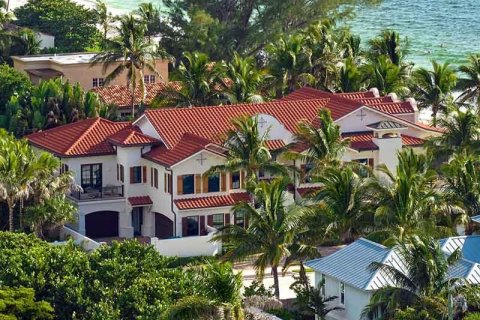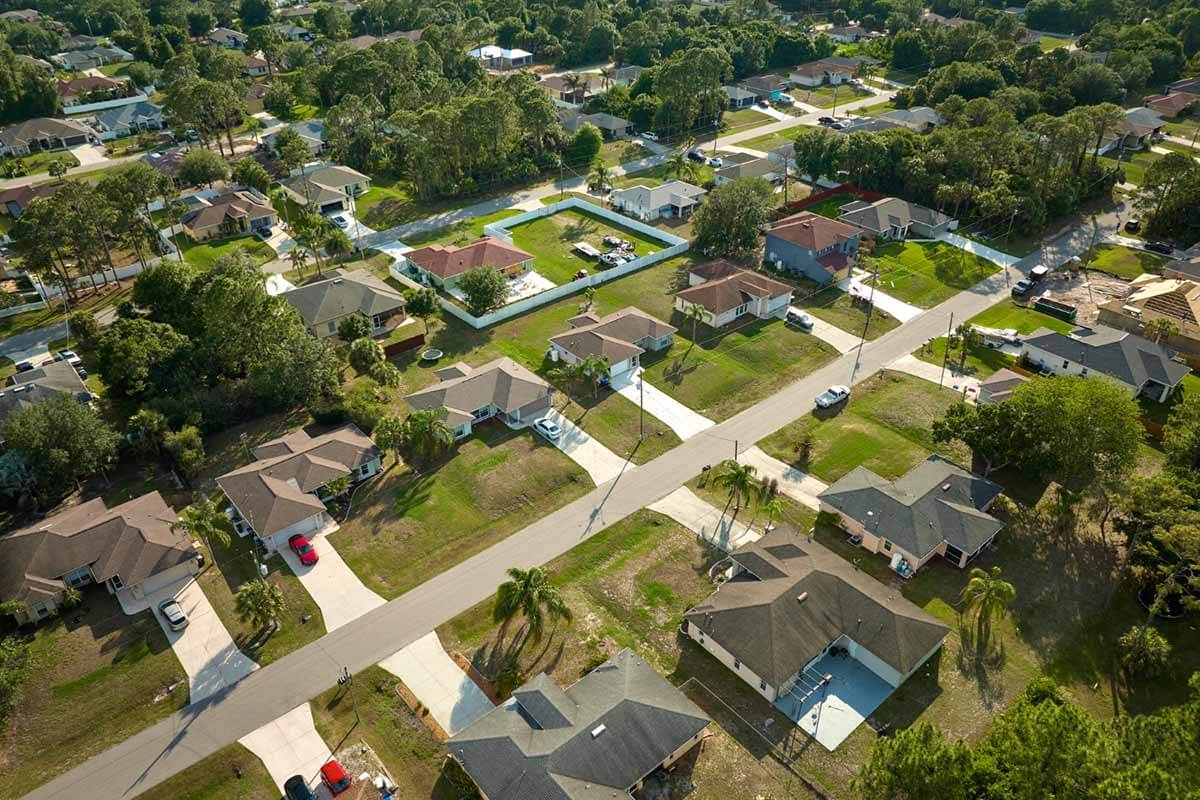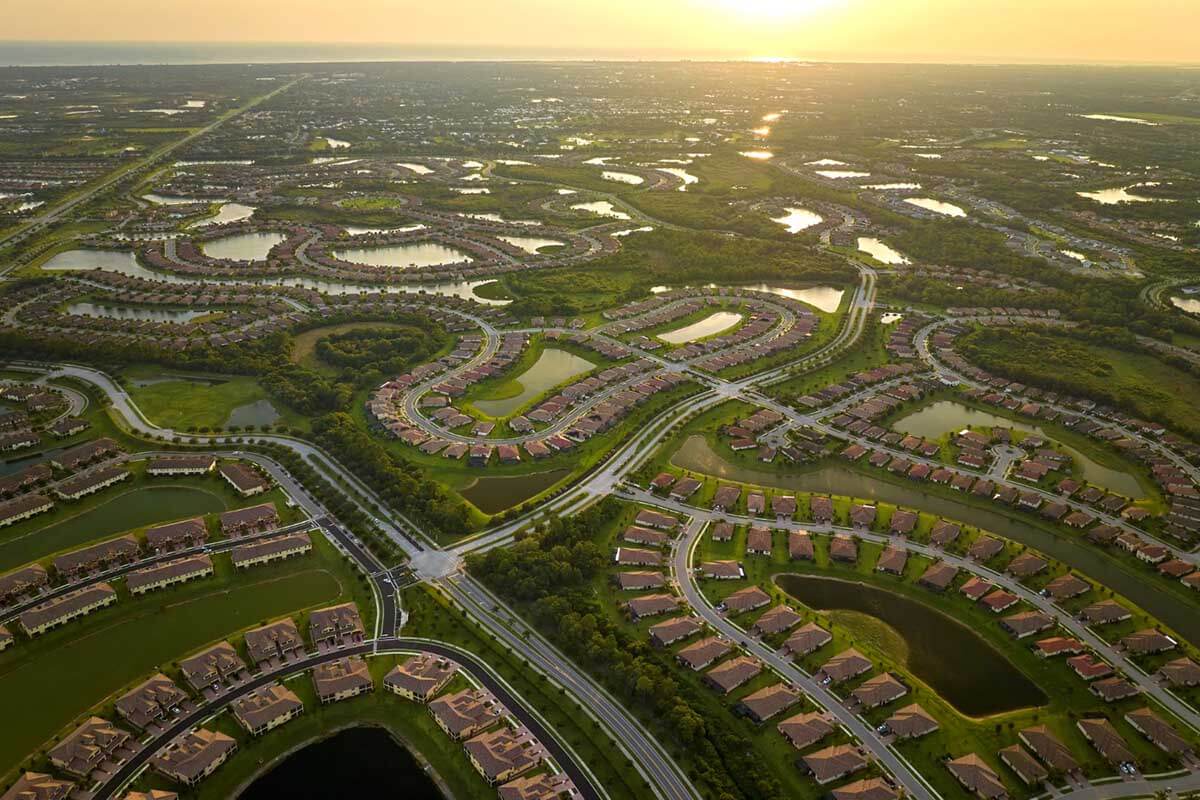
Buyers of foreign real estate should bear in mind that annual insurance will be added as a significant expense for maintaining your property.
Home insurance is the second most popular type of insurance in the United States, right after car insurance.
Content:
- Aspects of real estate insurance in the USA
- Features of home insurance in Florida
- The cost of property insurance in Florida
- The cost of real estate insurance in Florida
- Insurance of rental housing and residential premises for offices
Aspects of real estate insurance in the USA
Except for mortgage loans, most types of property insurance in the US are voluntary. Property insurance is mandatory prior to applying for a mortgage. However, practice demonstrates that property insurance is a sound decision even if real estate is acquired without attracting credit funds.
When you find obvious problems with real estate paperwork, home insurance will help you avoid any financial risks. If you are faced with claims for compensation for the damage caused, the executed property insurance contract will pay all expenses associated with defending your rights in court.
The average American household spends between 2% and 3% of the family budget, according to analysts from the financial service Bankrate. In the US, there are eight primary categories of real estate insurance coverage.

Types of homeowner insurance policies available in the US feature:
- HO-1 insurance is the most common form of property risk insurance. It allows you to insure items inside the home, e.g., furniture, flooring, walls, ceilings, and partitions, as well as items in nearby buildings and the garage. Personal property damage is not covered by this type of insurance. It only covers material losses in the event of force majeure circumstances, e.g., fire, explosions, street riots, vandalism, and theft. Other natural occurrences covered include lightning, hail, hurricanes, and volcanic eruptions.
- HO-2 insurance is a type of insurance that protects your home and your personal possessions against damage. The following are added to the insured occurrences listed in the HO-1 insurance: damage from ice, precipitation, sleet, and domestic appliance fires, plumbing, heating, and air conditioning system breaks brought on by frost, voltage drops in the wiring.
- HO-3 insurance is a type of insurance that protects a person's home, personal items, and property while also paying for additional household expenses and third parties' medical costs in the event of an accident. This kind of insurance policy covers the risks connected to the following occurrences: property damage from domestic or wild animals, military conflicts, nuclear threat, structural wear, corrosion, and inadequate property maintenance. It also covers pollution, mould, and fungus.
- HO-4 insurance, or so-called rental housing insurance. Tenants can benefit from this kind of insurance by having coverage for both the maintenance and damage to their personal possessions and their rental property. This kind of insurance does not cover hazards associated with the building's or home's design elements. It is applied in the insurance cases listed in the HO-1 insurance and HO-2 insurance policies.
- HO-5 insurance is a form of "golden mean" in terms of residential insurance. Due to the fact that it provides additional obstacles and contingencies, it is more expensive than the general-purpose home insurance with identified risks. Additionally, the owner of this kind of policy does not need to provide evidence as to why his property was damaged. Jewellery and other valuables are protected with this type of insurance.
- HO-6 insurance is a policy for apartments. This insurance protects the load-bearing structures and any personal belongings inside the apartment, including the walls, as well as the home's owner's third-party obligation. Additionally, the condo owners living in the neighbourhood of the apartment are responsible for all of the property and communal facilities, thus, it has its own insurance coverage.
- HO-7 insurance is a type of insurance that protects against risks related to transportable, prefabricated, and mobile home dwellings. This kind of property insurance policy covers additional household expenses, private belongings, and personal obligations to third parties, including medical payments. It is not essential to establish a connection between damage and the cause of damage in order for the insurance to cover the house's external structure and internal layout. Damage to personal property is only covered by the insurer under the conditions laid out in HO-1 insurance.
- HO-8 insurance is a form of property insurance coverage for owners of old buildings, designated historical homes or architectural landmarks, and residences made of materials no longer used in construction. This sort of insurance is suitable for homeowners who know that repairs can cost more than the home's true value. You can anticipate obtaining financial reimbursement from the same insured events covered by the HO-1 insurance policy.
Frequently, a condition is introduced concerning taking inflationary correlations into consideration when applying for an insurance coverage. As a result, the insurance becomes more expensive. You have the option of choosing insurance with a deductible to lower the cost of the coverage. This kind of insurance presupposes that the client will bear a portion of the loss out of his own pocket. Insurance plans with deductibles of $250, $500, or $1,000 are the most common. Franchise insurance is a lucrative form of coverage, enabling the client to lower their insurance expenses by more than 20%.
Utility blocks, garden plants, etc., can be insured separately when insuring a residence on a land plot. This will equal 5–10% of the price of the actual house.
The price of home insurance in the United States has been steadily rising over the past two years. The fact that insurance costs are growing faster than inflation is a serious issue for property owners. Mortgage lenders, who need property insurance to get a loan, are particularly concerned. According to the Insurance Information Center, Triple-I, a 2022 insurance policy will cost approx. 5% more than a previously signed house insurance policy.
Features of home insurance in Florida
Florida's real estate market has unique intricacies regarding home insurance. Due to the high risk of bankruptcy and the area's geographic location and climate, many businesses think it risky to establish an insurance company in Florida. A JMP Securities analyst claims that US insurers are not competing for business as they are worried about suffering significant losses from hurricanes, floods, and tropical storms. Additionally, Florida's government resolves a lot of citizen complaints against insurance providers. The increase in the price of the insurance product has angered state residents. Insurers are aware, however, that this is a required action taken to safeguard the insurance company's ability to pay.
The Citizens Property Insurance Corp., the company with the largest state share, is currently Florida's most notable insurer. This insurance company was established twenty years ago as a haven for those who couldn't find a suitable insurance product at a commercial insurance agency. This company has increased its number of policies issued during the last two years by 13% of the total market for public insurance services.

The cost of property insurance in Florida
To date, Florida's most influential insurer is the Citizens Property Insurance Corp., which has a high state stake. This insurance corporation was founded 20 years ago as a haven for those who couldn’t find an acceptable insurance product in a commercial insurance agency. Over the past 2 years, the number of policies issued by this corporation has grown by 13% of the total number of public insurance services offered.
The cost of real estate insurance in Florida
The price of an insurance policy for a property is substantially higher than the national average as a result of a number of insurance companies leaving Florida. Tropical storms and hurricanes frequently occur; as a result, homeowners frequently purchase property insurance to protect themselves from financial loss. The average yearly cost of insurance in the nation, according to the Institute of Insurance Information, is less than $1,600. In contrast, the corresponding figure in Florida is close to $4,235 annually.
Insurance of rental housing and residential premises for offices
The majority of the time, rental properties are fully insured. This insurance coverage considers all potential types of damage. According to this insurance, the insurance provider is liable for paying damages to property, brought on by the tenant's or another party's fault.
Small companies frequently rent out residential spaces in Florida and also use them as offices and workshops. SBI (Small Business Insurance) insurance products, which take into account the interests and opportunities of smaller firms, are used in this case to carry out real estate insurance. These policies note the installation of specialised equipment in residential buildings. They also consider the increased use of the space by customers of small businesses. The conduct of small firms that they insure is keenly watched by insurers. Sanctions up to the cancellation of the policy are applied when the terms of the current office-at-home insurance are violated.
In Florida, having home insurance is mandatory. Residents of the state purchase insurance policies despite the high prices charged by insurance companies in order to guard against material losses brought on by natural disasters.
